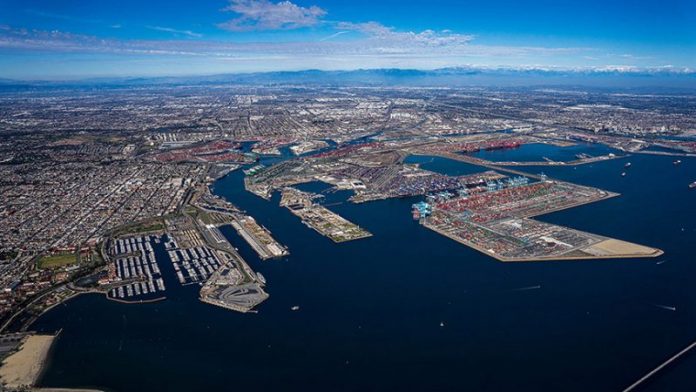-
A decline in average call size in all world regions was noted in S&P’s new quarterly report “Port Performance Program: Global Quarterly Analysis Summary”
-
Call size is the quantity of containers loaded and discharged on a port call
-
The drop in container demand and a fall in the average quantity of containers loaded and discharged per vessel call substantially reduced operational strain on terminals
-
Container ports in all world regions, save for the Middle East and India, saw better productivity
-
North American container ports registered the biggest improvement in productivity among all world regions in the second quarter of 2023
The average call size in all world regions in the second quarter of 2023 declined compared to the same period last year, according to S&P Global Market Intelligence’s new quarterly report, “Port Performance Program: Global Quarterly Analysis Summary”.
Call size is the quantity of containers loaded and discharged on a port call. North America saw the biggest decline in call size at -26.5% for the period in review.
Better productivity or port-moves-per-hour was observed at container ports in all world regions, save for the Middle East and India, which saw the biggest year-on-year decline in overall productivity and vessel waiting times at -13.2%, the report said.
It attributed the global improvement in performance to the drop in container demand; and a fall in the average quantity of containers loaded and discharged per vessel call in each region that has substantially reduced the operational strain on terminals.
In a statement, Turloch Mooney, Director at S&P Global Market Intelligence, said: “Systemic global port congestion has all but evaporated as operational conditions at global ports continue to improve following the unprecedented levels of disruption triggered by the COVID-19 pandemic. The biggest performance improvements are evident in North America, which, as the world region that suffered the severest delays, is now seeing the steepest recovery overall despite persistent delays and lower levels of ocean-side performance at some key ports.”
A steep reduction in vessel waiting times (-67.2%) contributed to North American container ports’ stellar productivity performance.
Throughout 2023, the report noted the median import container dwell times at North American ports—the time from offloading of container from vessel to terminal gate release—have also been stable at around three days.
In terms of berth productivity or berth-moves-per-hour, Northeast Asia extended its position as the global leader with further improvements (+12.9%) in the quantity of containers moved per hour vessels spend at berth.
Southeast Asia showed the biggest decline in berth-moves-per-hour at -7.5%. The region saw a rise in median import container dwell time in May.
Africa and North America experienced the biggest decrease in arrival hours (vessel waiting time plus steam-in time) at 29.9% and 67.2%, respectively.
Arrival hours expanded 24.5% in the Middle East and India.
The median import container dwell time increased 25% in the Mediterranean during the second quarter of 2023 while in northern Europe, the median export container dwell rime increased by more than 13%.
All regions showed an increase in total calls in the second quarter this year from the same period last year. The biggest increase in total calls was seen in Southeast Asia at 30.9%.
RELATED READ: Global on-time performance of sea vessels relatively high in Jan





